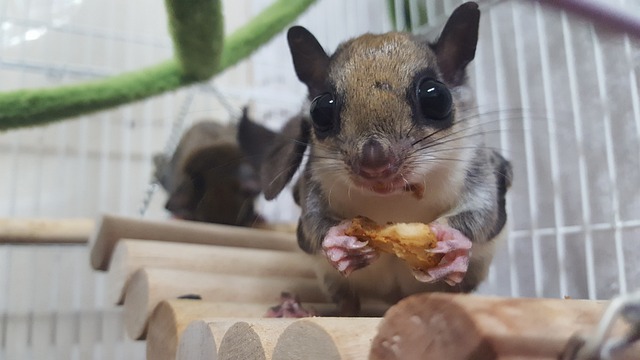Flying squirrels are a fascinating group of nocturnal mammals known for their remarkable ability to glide through the air. These small, agile creatures have a number of physical adaptations that allow them to glide from tree to tree, covering impressive distances with ease.
In this article, we’ll explore some of the key adaptations that make flying squirrels such expert gliders.
Flaps of Skin
The Patagium One of the most distinctive features of flying squirrels is the patagium, a thin, furry membrane of skin that stretches between their front and hind legs. This patagium acts like a parachute or glider wing, allowing flying squirrels to catch the air and generate lift as they glide.
Strong Legs
The Powerhouse Flying squirrels may not have wings, but they have strong legs that enable them to jump and push off from a tree with great force. Their leg muscles are well-developed and provide the power they need to launch themselves into the air and maintain their glide.
Flat Tail of Flying Squirrels
The Rudder A flying squirrel’s tail is another key adaptation for gliding. Unlike the bushy, curved tails of tree squirrels, flying squirrels have flattened tails that serve as a rudder during flight. By adjusting the angle of their tail, flying squirrels can steer and control their direction of flight.
Lightweight Body
The Payload To glide through the air, flying squirrels must be lightweight and streamlined. They have a slender body shape and are covered in a thick layer of fur that helps insulate them in cold climates. By reducing their body weight, flying squirrels can generate more lift and stay airborne for longer periods of time.
Flying Squirrels Large Eyes
The Navigator Finally, flying squirrels have large eyes that help them navigate through the forest at night. They have excellent vision, allowing them to spot potential landing sites and avoid obstacles as they glide from tree to tree.
In conclusion, the physical adaptations of flying squirrels are truly remarkable. From their stretchy patagium to their streamlined bodies and flat tails, flying squirrels have a suite of features that allow them to glide through the forest with grace and agility. These adaptations have helped these small mammals thrive in their forest habitats for millions of years, and they continue to fascinate and inspire scientists and nature lovers alike.

